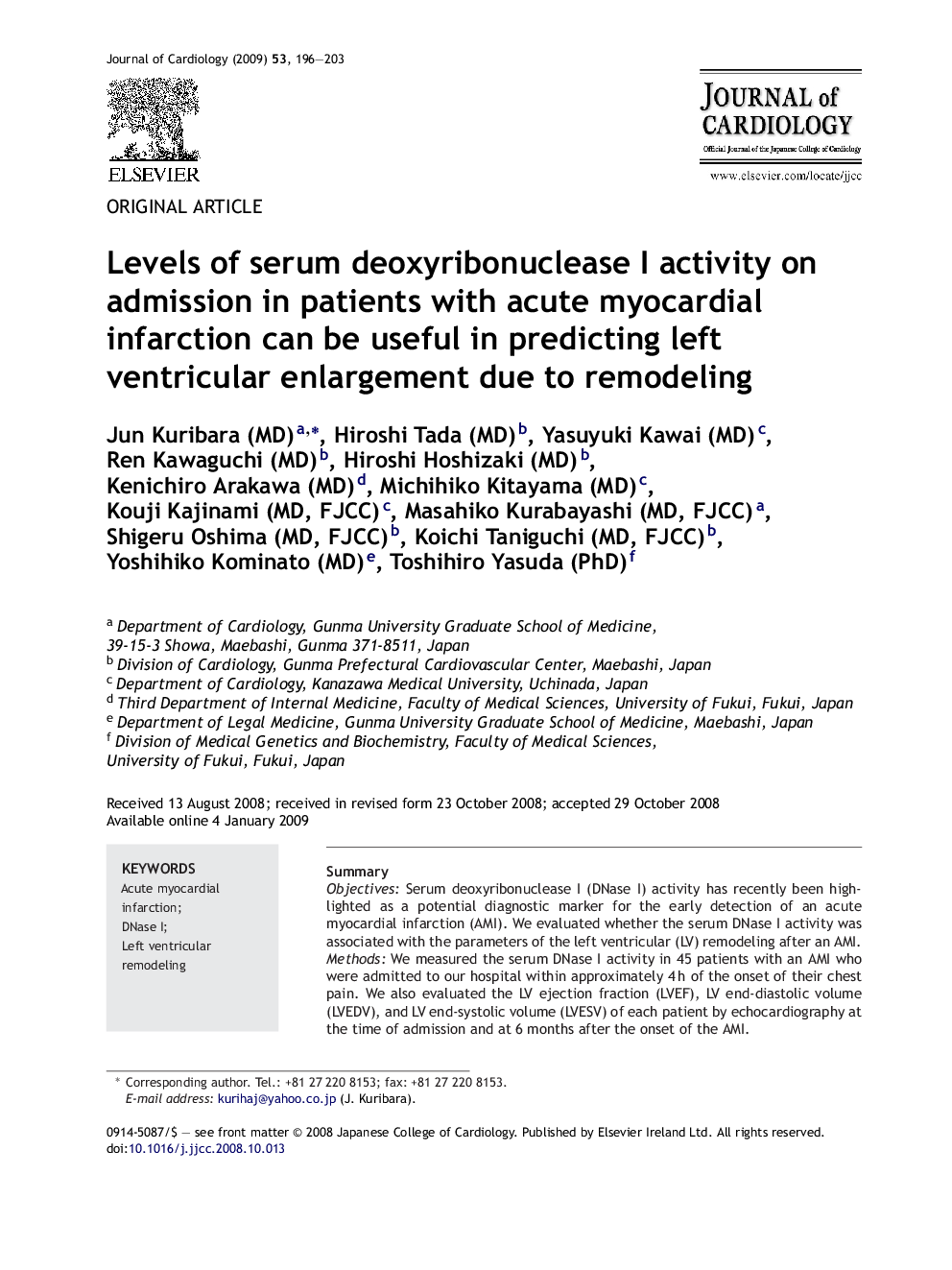| Article ID | Journal | Published Year | Pages | File Type |
|---|---|---|---|---|
| 2963715 | Journal of Cardiology | 2009 | 8 Pages |
SummaryObjectivesSerum deoxyribonuclease I (DNase I) activity has recently been highlighted as a potential diagnostic marker for the early detection of an acute myocardial infarction (AMI). We evaluated whether the serum DNase I activity was associated with the parameters of the left ventricular (LV) remodeling after an AMI.MethodsWe measured the serum DNase I activity in 45 patients with an AMI who were admitted to our hospital within approximately 4 h of the onset of their chest pain. We also evaluated the LV ejection fraction (LVEF), LV end-diastolic volume (LVEDV), and LV end-systolic volume (LVESV) of each patient by echocardiography at the time of admission and at 6 months after the onset of the AMI.ResultsThe serum DNase I activity peaked at 3.5 ± 2.0 h after the onset of the symptoms in the patients with an AMI, thereafter exhibiting a time-dependent decline within 12 h, and a return to the basal level within 24 h in almost all cases. Neither the LVEF, LVEDV, nor LVESV in each patient on admission exhibited a significant correlation to the peak levels of the serum DNase I activity. Although there was no correlation between the peak DNase I activity and LVEF at 6 months after the onset, a significant positive correlation of the peak DNase I activity with LVEDV and LVESV (r = 0.48, p < 0.001 and r = 0.34, p = 0.02, respectively) was found.Furthermore, the LVEDV at 6 months after the onset in the high DNase I activity group (>17.9 U/L) were significantly higher than those in the low DNase I activity group (≤17.9 U/L) (118.0 ± 28.2 ml vs 89.3 ± 25.4 ml, p = 0.026).ConclusionsThe serum DNase I activity level may predict LV enlargement associated with remodeling after an AMI.
